Why Your Next Front Door Should Be Green (And How to Paint It Flawlessly)
You know, after years of working on homes, I’ve come to believe the front door is like the firm handshake of a house. It sets the entire tone. And while trends come and go, one color just keeps proving its staying power: green. It’s not just a color; it’s a vibe. Green can feel classic and stately, or modern and welcoming. But getting it right is so much more than just grabbing a color chip that looks good under the harsh lights of a hardware store.
In this article
Honestly, I’ve seen it all. I’ve seen homeowners’ best efforts start to peel and flake in less than a year. I’ve also helped bring ancient doors back to life. The difference always comes down to the same things: understanding the paint itself and using a pro-level process. So, let’s walk through it, from the stuff inside the can to the hands-on tricks that guarantee a beautiful door that actually lasts.
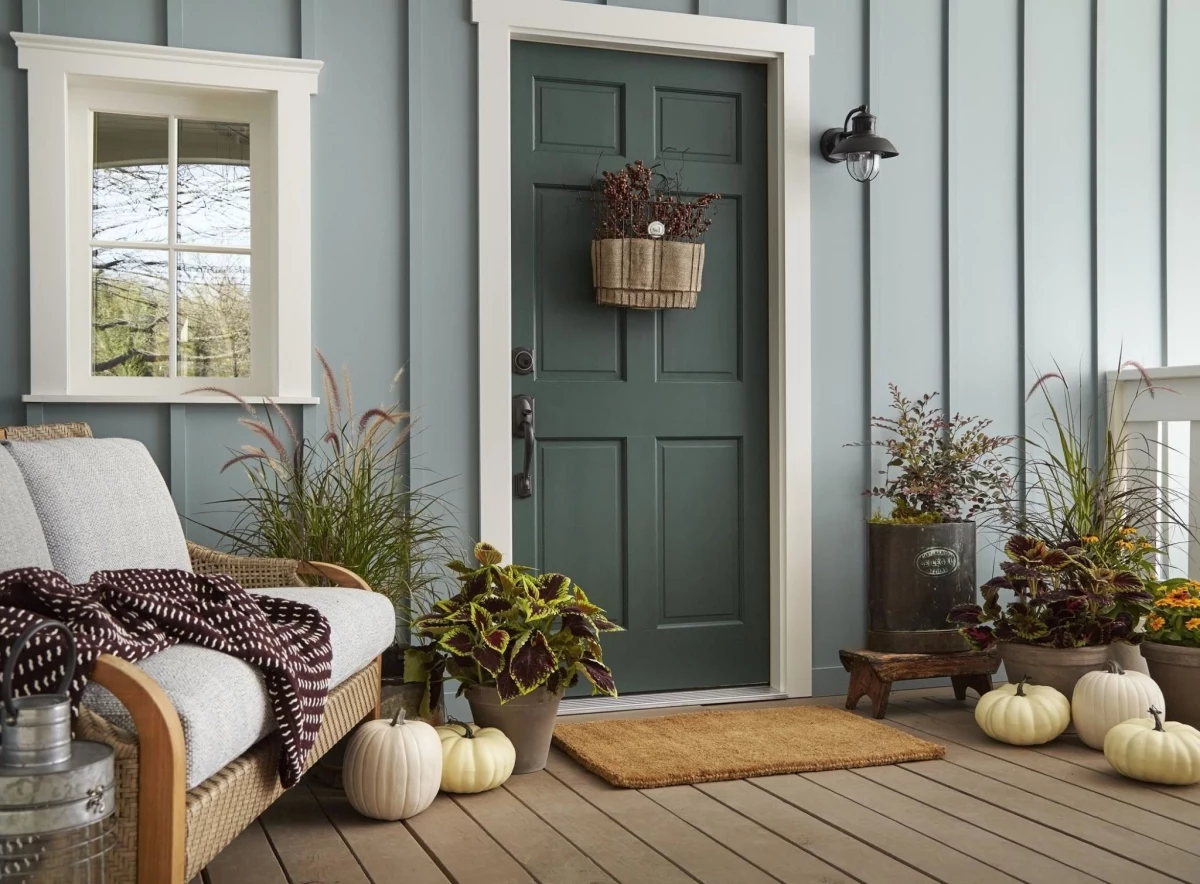
More Than Just Color: What’s in a Good Can of Paint?
A front door has a tough job. It gets blasted by sun, pelted with rain, and slammed shut a dozen times a day. The paint you choose is its only armor. Understanding a little bit about what you’re buying is the first step to a finish that won’t fail you next season.
The color itself comes from pigments. For exterior greens, you want durable, inorganic pigments that can stand up to UV rays. Earthy, muted tones like olive and forest green often use incredibly stable mineral pigments. Brighter colors like emerald or teal use different pigments that are engineered to be fade-resistant. This is a big reason why professional-grade paints cost more—you’re paying for better, more densely packed pigments that won’t look washed out after a few years of sun.
Then there’s the binder, which is basically the glue that holds the pigment to the door. For years, oil-based (alkyd) paint was the gold standard for its hard, smooth finish. But modern tech has changed the game. Today’s high-end, 100% acrylic water-based paints are often even better. Why? They’re more flexible. A wooden door naturally expands and contracts with the weather, and a flexible acrylic paint moves with it, which means it’s far less likely to crack and peel. Plus, acrylics hold their color better and don’t yellow over time like old oil paints often did. They also have fewer harsh fumes (low VOCs), which is always a plus.
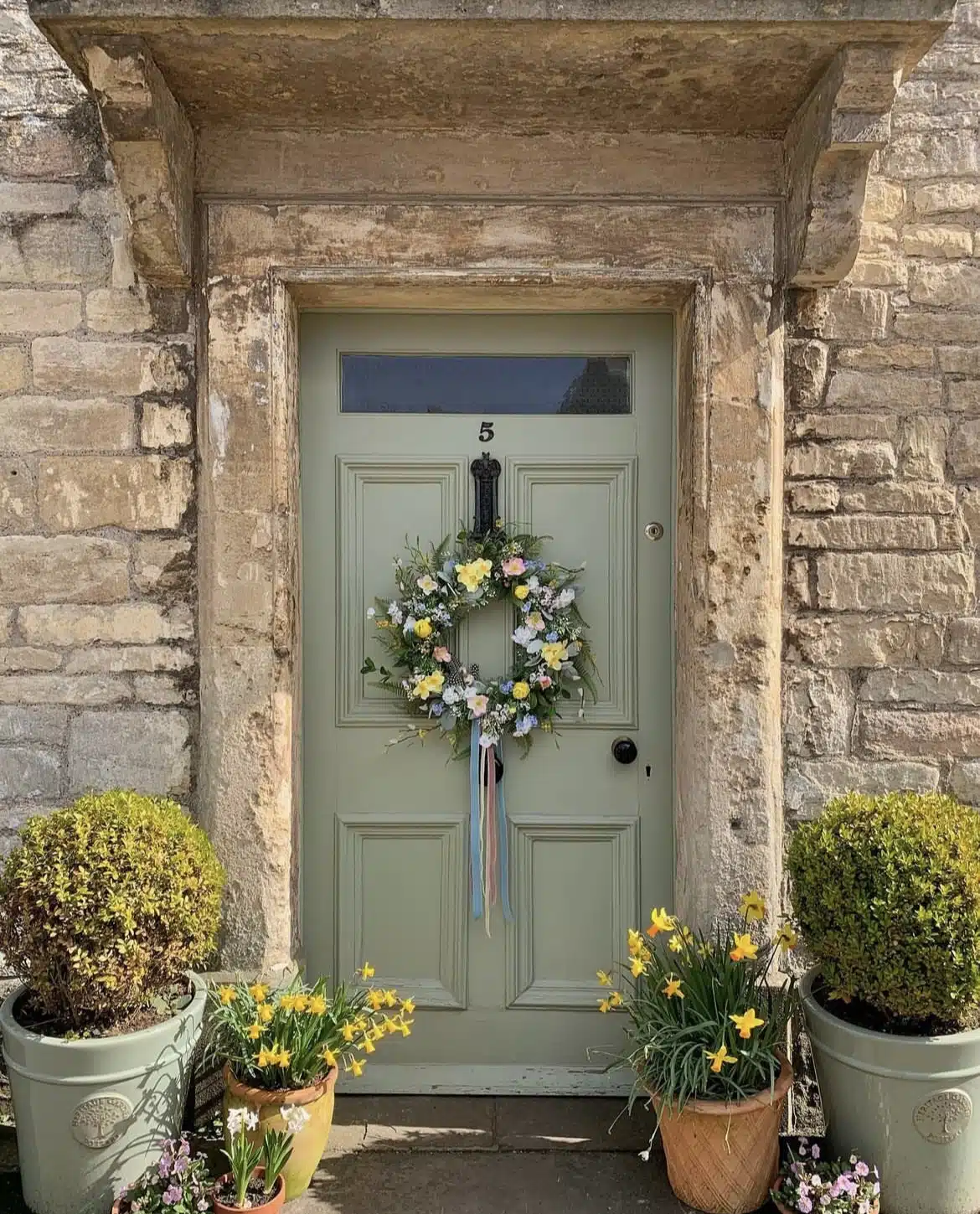
Good to know: a quick breakdown between the two most common types:
- Acrylic (Water-Based): This is what I recommend for most DIY projects. It has an easy cleanup with just soap and water, dries much faster (hours, not all day), has a lower odor, and offers that fantastic flexibility for wood.
- Alkyd (Oil-Based): This stuff creates an incredibly hard, durable surface, but it’s a bit more work. It requires mineral spirits for cleanup, has a very slow dry time, and a strong smell. It’s a classic choice, but premium acrylics have really caught up.
And what about sheen? This isn’t just about looks; it’s about protection. For a front door, I almost always push for a semi-gloss or high-gloss finish. The glossier the paint, the more durable and moisture-resistant it is. Grime and fingerprints wipe right off a high-gloss surface. A semi-gloss is a great, practical alternative with a little less shine. Steer clear of satin or eggshell finishes here—their slightly porous surfaces trap dirt and offer less protection.
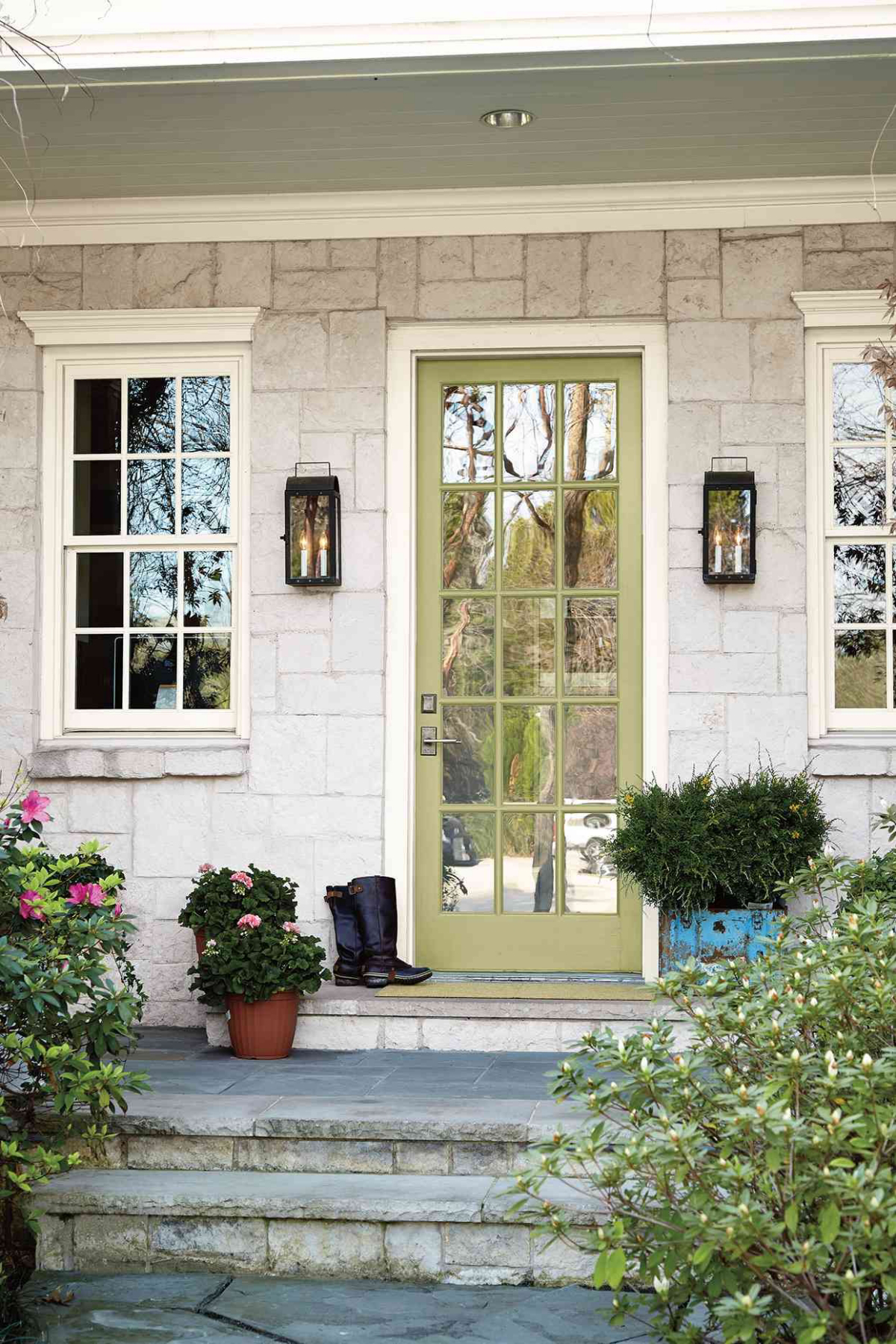
The Pro’s Shopping List: What You’ll Actually Need
Before you even think about cracking open a can of paint, you need to get your supplies in order. Buying quality stuff up front makes the job ten times easier. Here’s a typical shopping list to get you started.
- Premium Exterior Paint (1 Quart): A quart is plenty for a standard-sized door with two coats. Don’t let them sell you a whole gallon! Expect to pay between $30 and $50 for top-tier stuff like Benjamin Moore’s Aura Grand Entrance or Sherwin-Williams Emerald Urethane Trim Enamel.
- Exterior Primer (1 Quart): Crucial for adhesion and a smooth finish. A quart will cost around $20-$30. Zinsser 1-2-3 is a fantastic, reliable choice.
- A Quality 2.5” Angled Brush: This is not the place to save a few bucks. A good brush makes a world of difference. A Purdy or a Wooster will run you $15-$25 and will feel like a dream to use.
- Small Foam Roller & Tray: Great for the flat parts of the door. A small kit is usually under $10.
- Sandpaper (Assorted Grits): You’ll want a few different grits, like 80, 150, and 220. A multi-pack is about $10.
- Cleaner & Rags: A TSP substitute like Krud Kutter works wonders to get rid of hidden grime. A bottle costs around $10.
- The Small Stuff: Don’t forget painter’s tape, tack cloths for dust removal, and drop cloths. Budget another $15 for these essentials.
So, you’re looking at a total project cost of roughly $100 to $150 for a truly professional-grade result. Not bad for completely transforming the look of your home’s entrance!
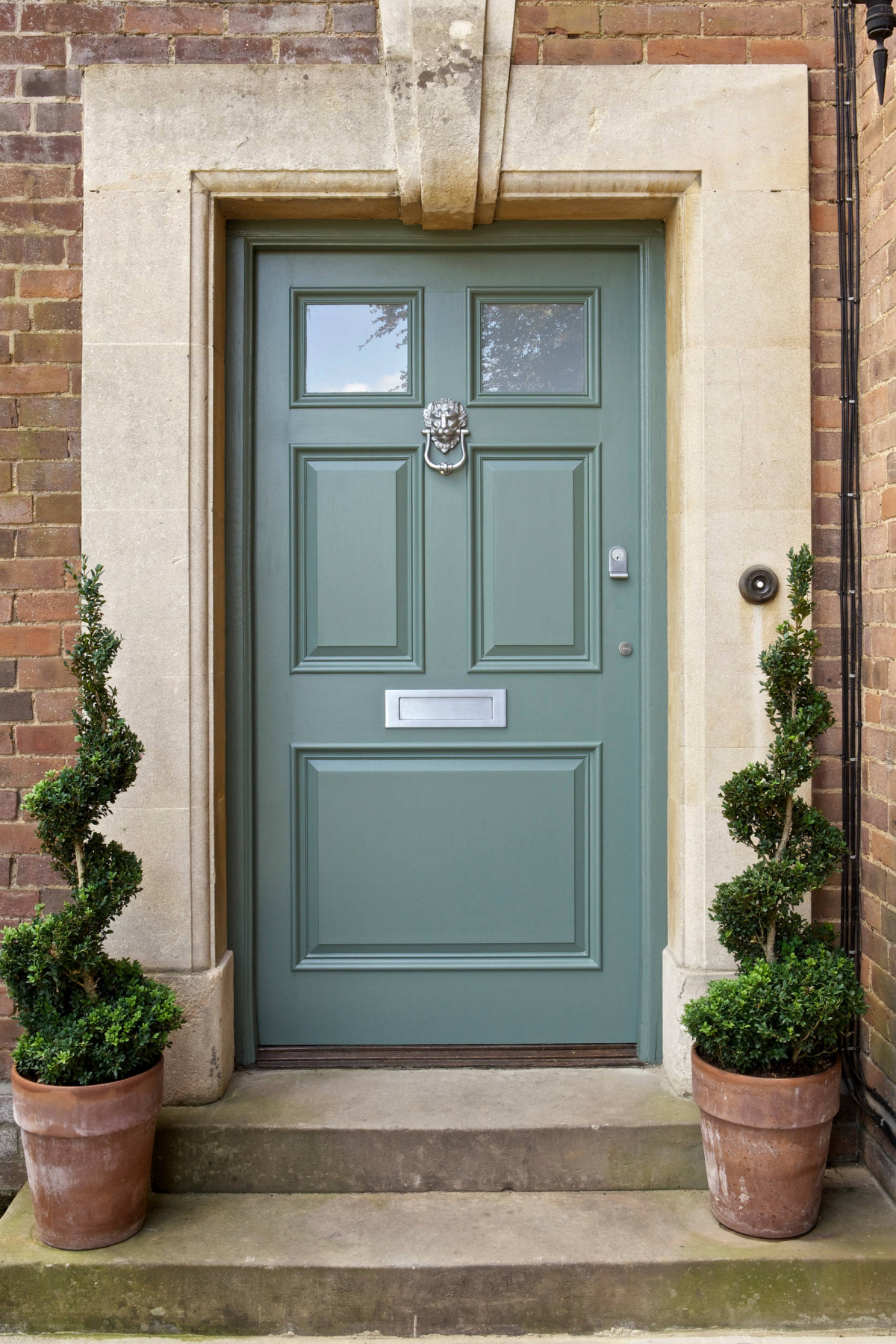
The Step-by-Step Guide to a Flawless Finish
I tell every person I train the same thing: a perfect paint job is 80% preparation. You can have the most expensive paint in the world, but if you slap it on a dirty, poorly prepped surface, it’s going to fail. Period.
Step 1: The All-Important Prep
If you can, take the door off its hinges and lay it across a pair of sawhorses. It’s just so much easier to avoid drips and get an even coat when you’re working horizontally. Next, remove ALL the hardware—handle, lock, knocker, everything. Taping around hardware is a rookie move and it never looks truly crisp.
Now, clean it. I mean, really clean it. Scrub the door down with a TSP substitute to cut through years of grease, dirt, and pollen. Rinse it thoroughly with clean water and let it dry completely. Seriously, wait until it’s bone dry. Trapped moisture is the number one cause of paint blistering later on.
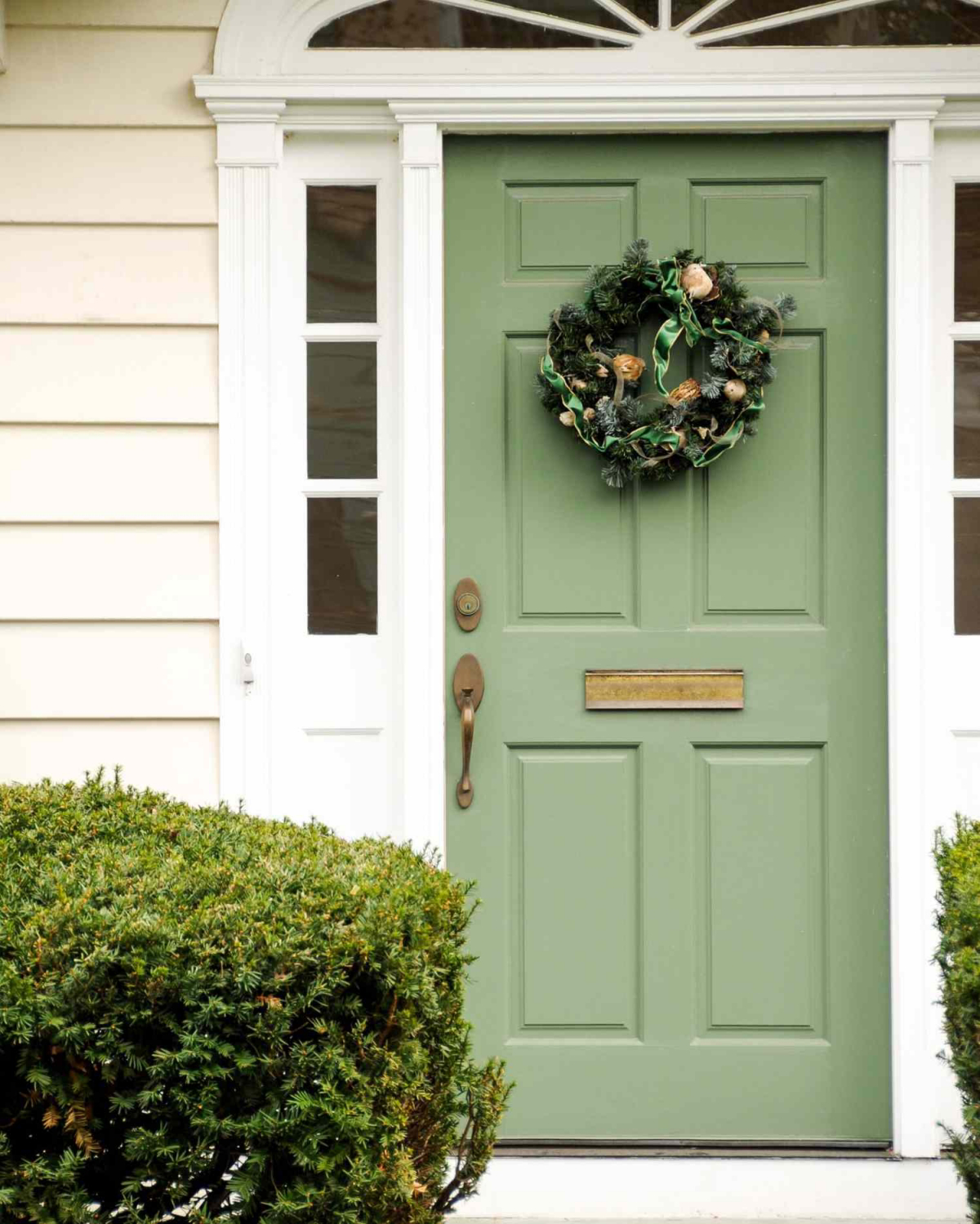
Once dry, scrape off any loose or flaking paint. Then, sand the entire door. The goal is to get rid of the old sheen and give the new paint a slightly rough surface to grip onto. A medium-grit sandpaper (around 150-grit) is usually perfect. A glossy surface is the enemy of good paint adhesion!
Step 2: Priming (Don’t You Dare Skip This)
Primer is non-negotiable. It seals the surface, prevents stains from bleeding through, and ensures your topcoat of paint sticks for good. If you’re working with bare wood that’s known for
Galerie d’inspiration
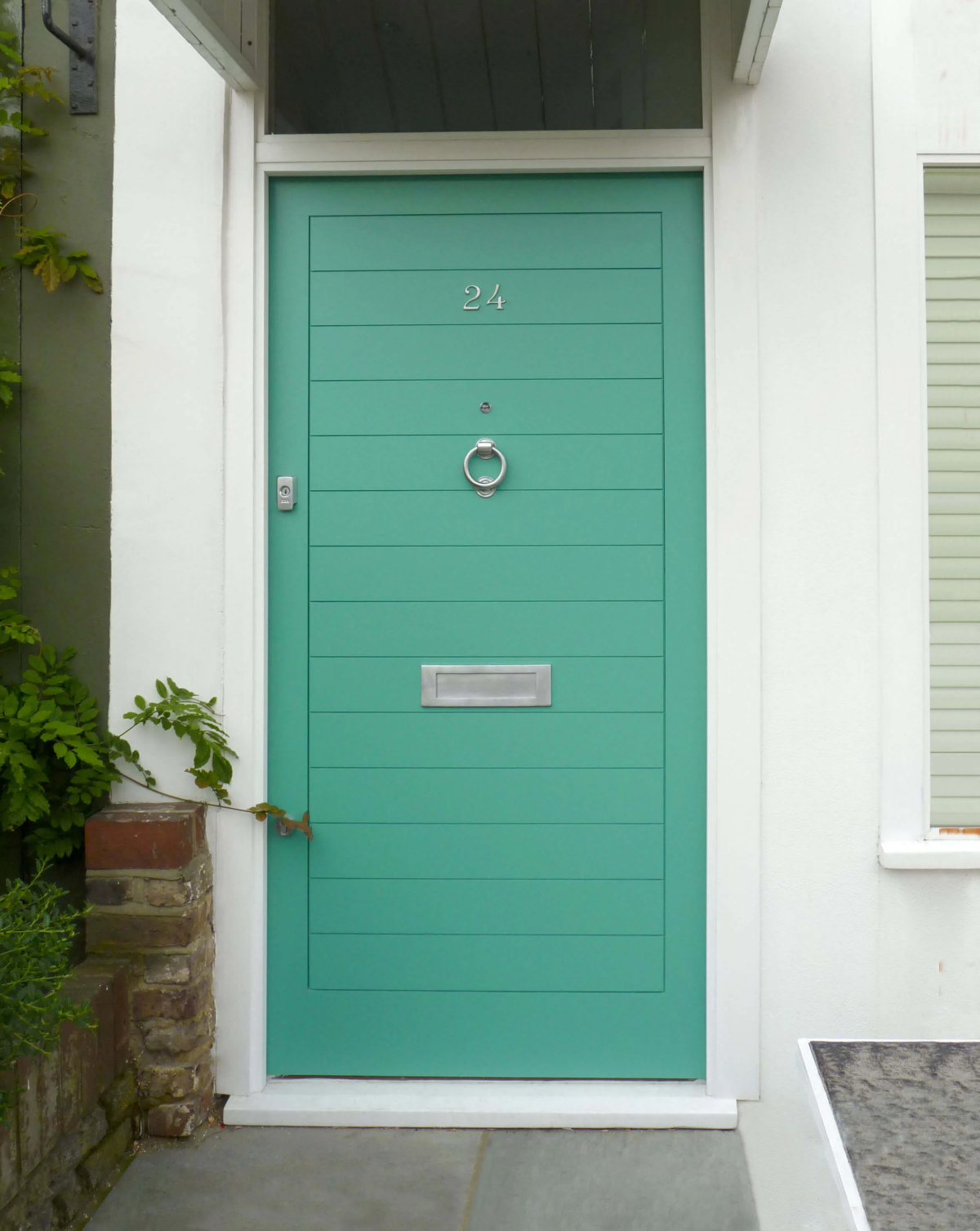
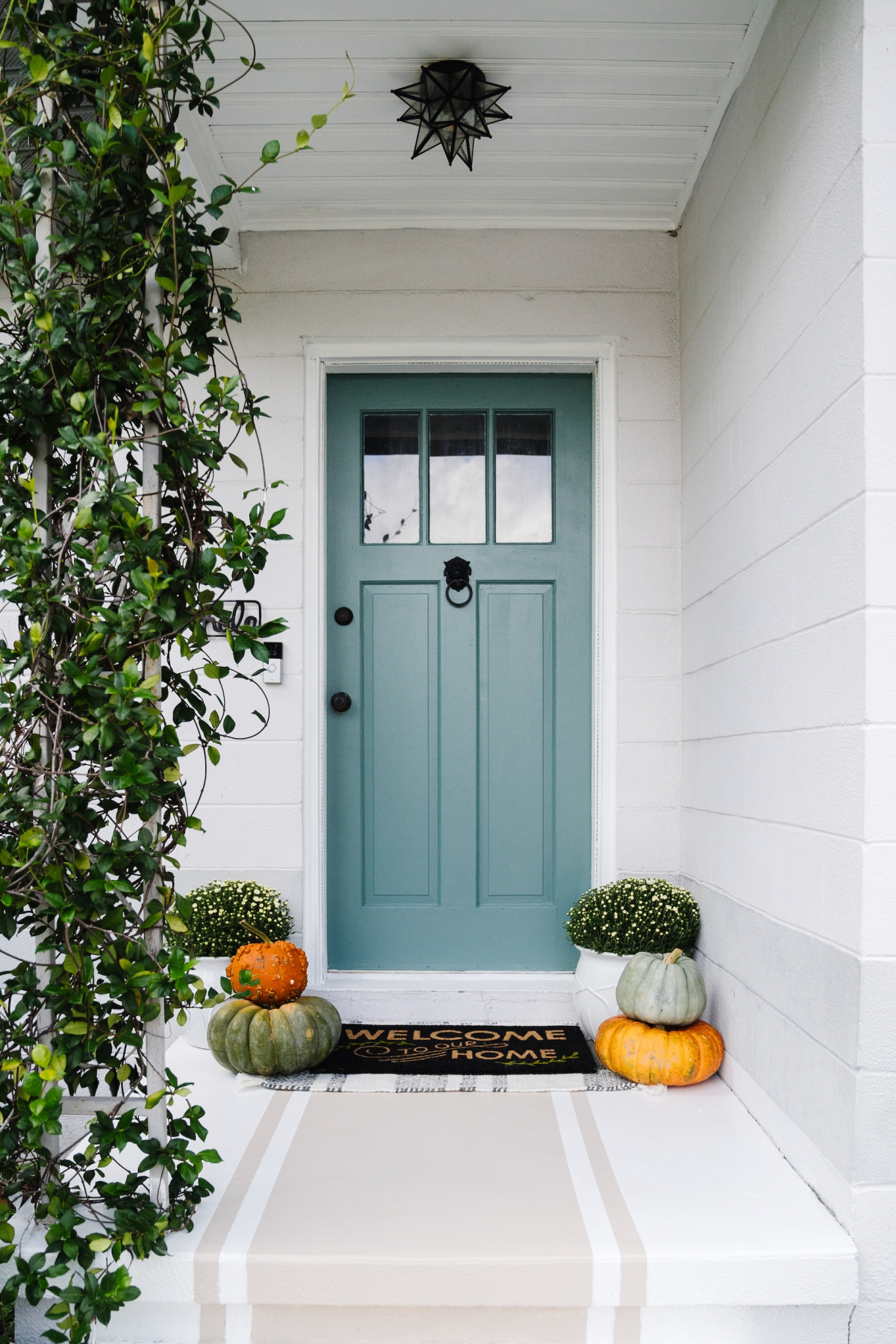
Satin Finish: The most popular choice for a front door. It offers a subtle, modern luster that hides minor imperfections and is wonderfully easy to clean. It provides a sophisticated look without being overly reflective.
High-Gloss Finish: A bold, dramatic statement. It reflects lots of light, making your green pop, and creates a highly durable, wipeable surface. Be warned: it will highlight every single flaw, so your prep work must be absolutely perfect.
For a reliable, forgiving result, satin is the go-to. For a flawless, show-stopping entrance, choose gloss.
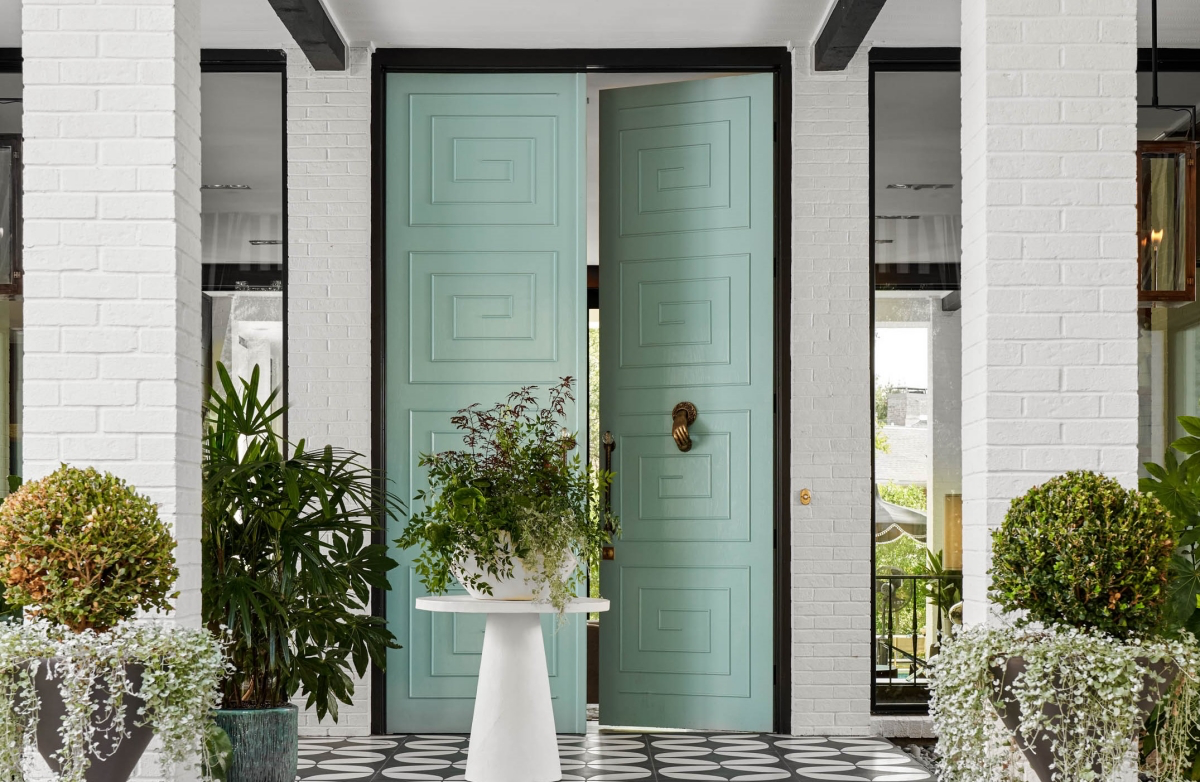
In early American history, a green door was a symbol of welcome and safety. It traditionally signified that the home was a safe resting place for travelers, where they could find a meal and a bed for the night.
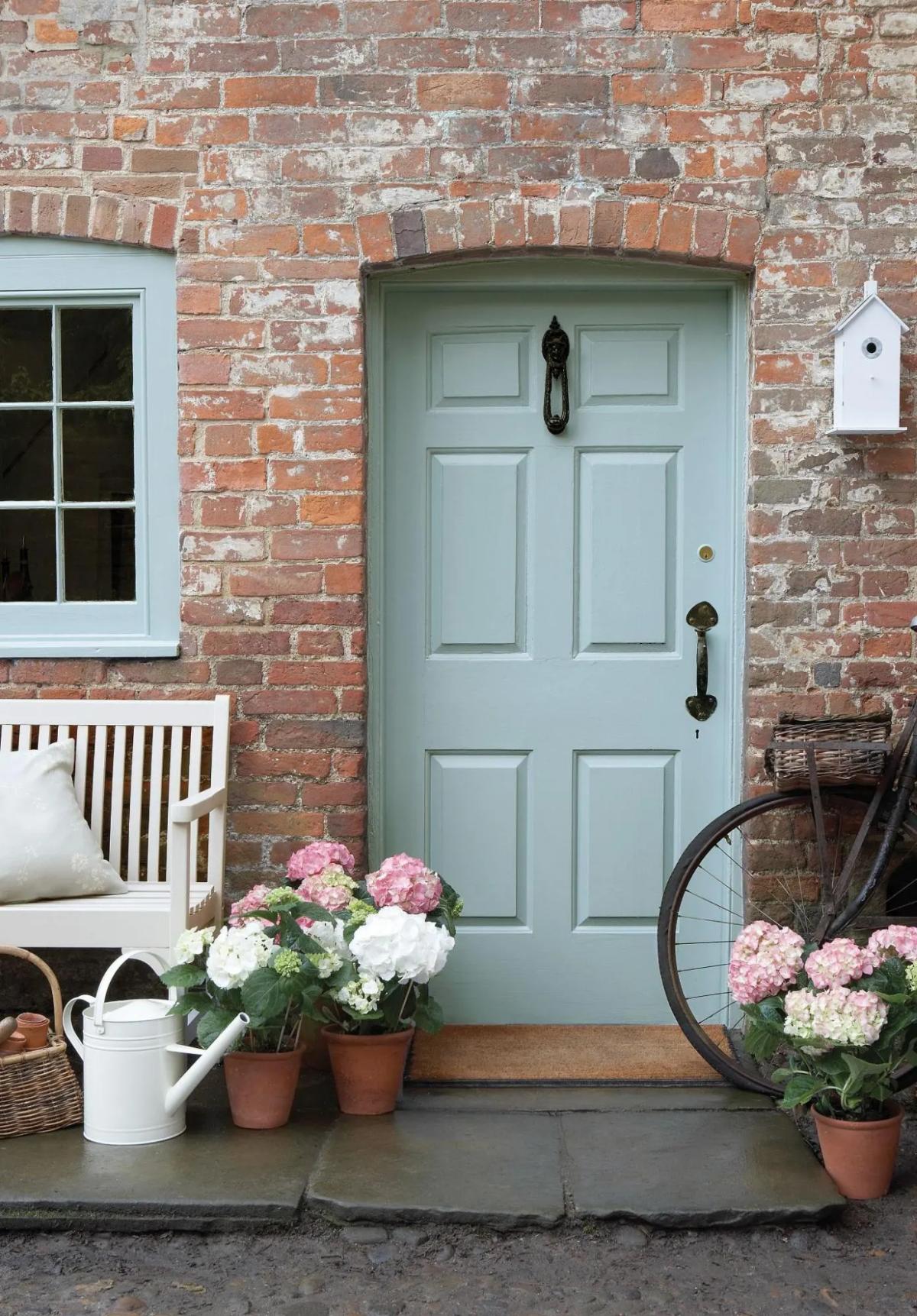
The right hardware is the jewelry for your door, and it can completely change the personality of your new green entrance.
- Aged Brass: Creates a warm, classic, and slightly vintage look. It pairs beautifully with deep forest and olive greens.
- Matte Black: Offers a modern, graphic, and high-contrast statement. It’s stunning against a muted sage or a zesty chartreuse.
- Polished Nickel: Provides a crisp, clean, and contemporary feel, perfect for cool-toned mint or teal greens.
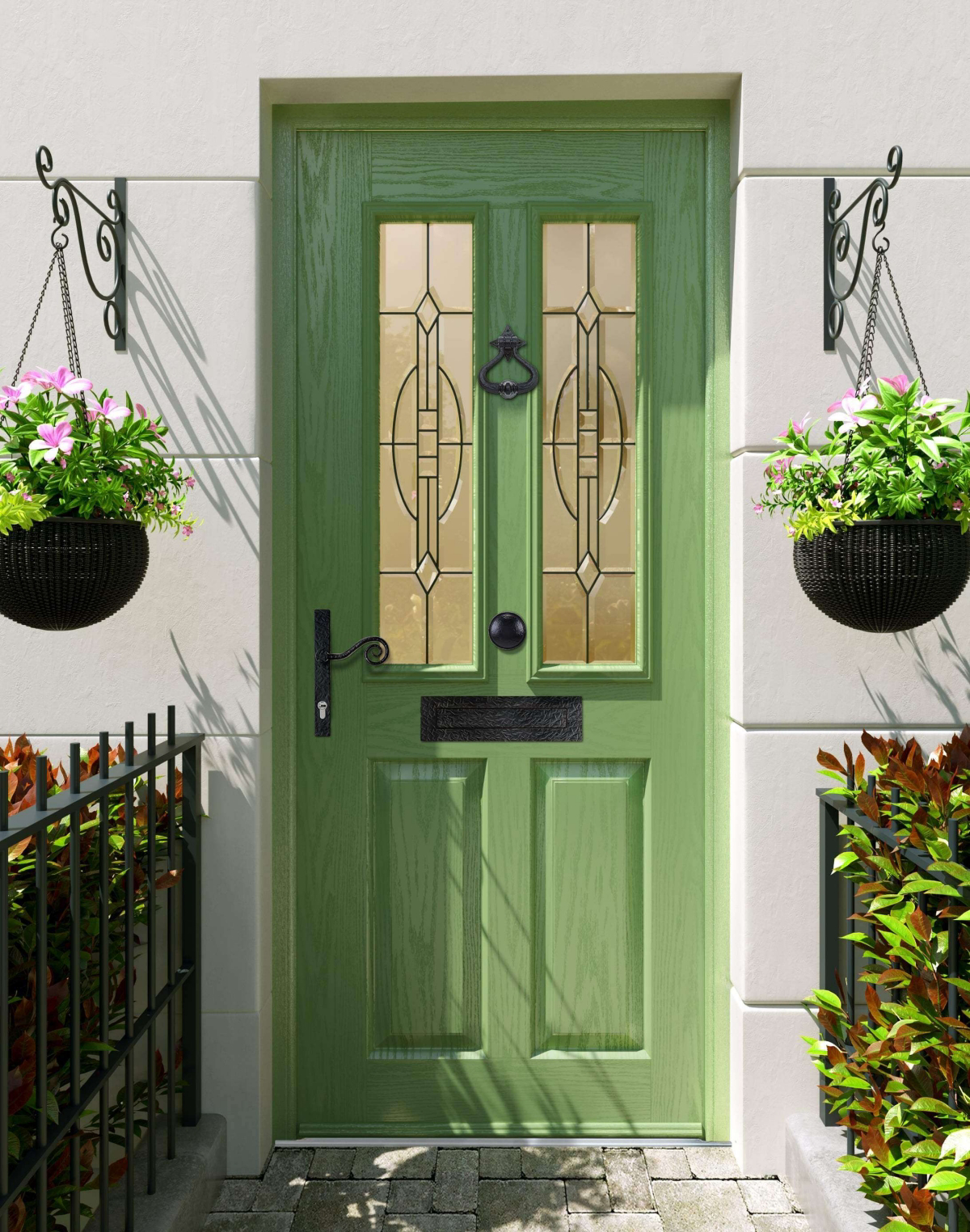
Wondering which specific green paints the pros use?
They often turn to dedicated door and trim enamels for their hard-wearing finish. Consider Benjamin Moore’s
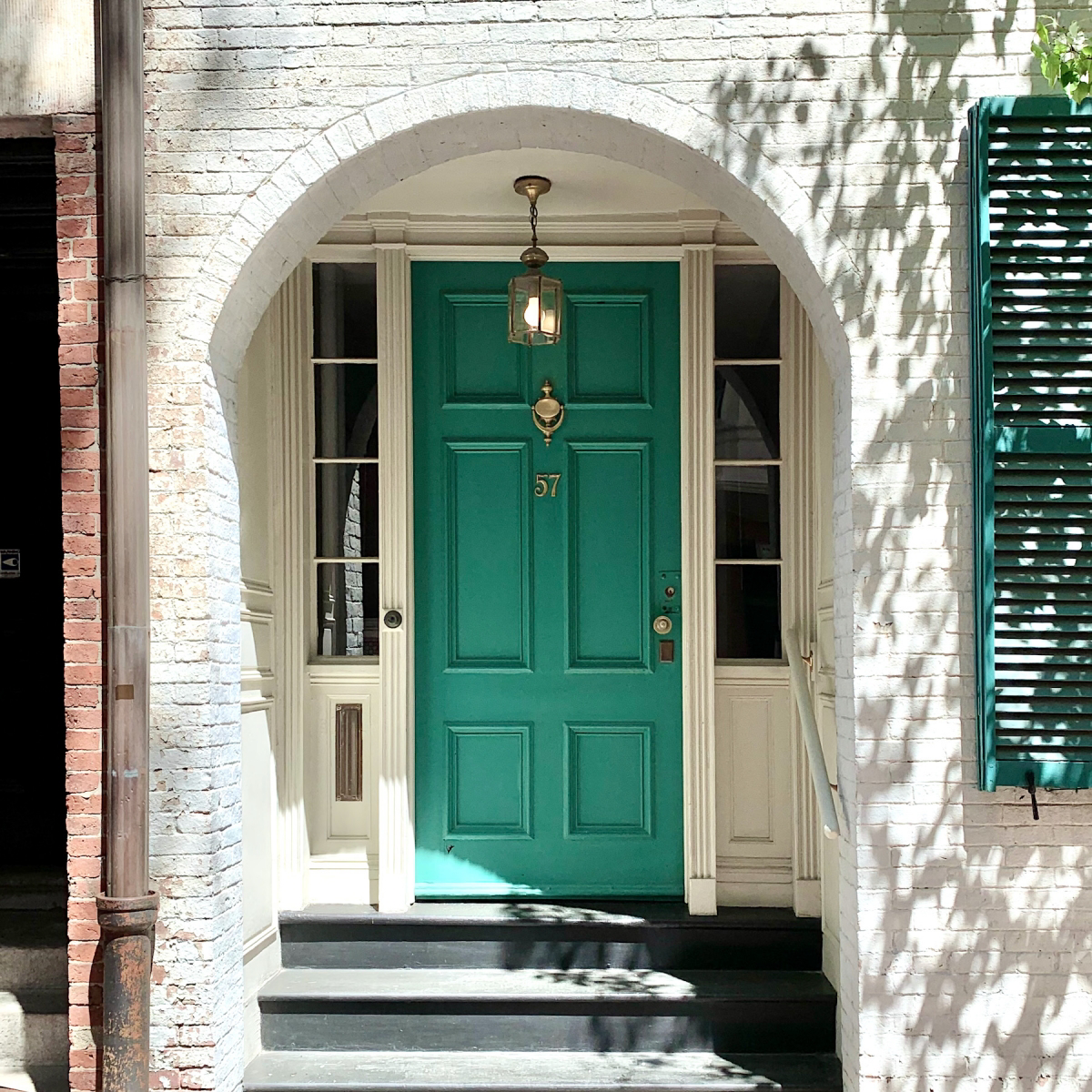
The #1 enemy of a perfect paint job: The weather. Never paint in direct, hot sunlight, which causes the paint to dry too quickly, preventing it from leveling out and creating brush marks. Also, avoid high humidity (above 70%), as it can dramatically slow the curing time, leaving the surface tacky and vulnerable to dust and debris.
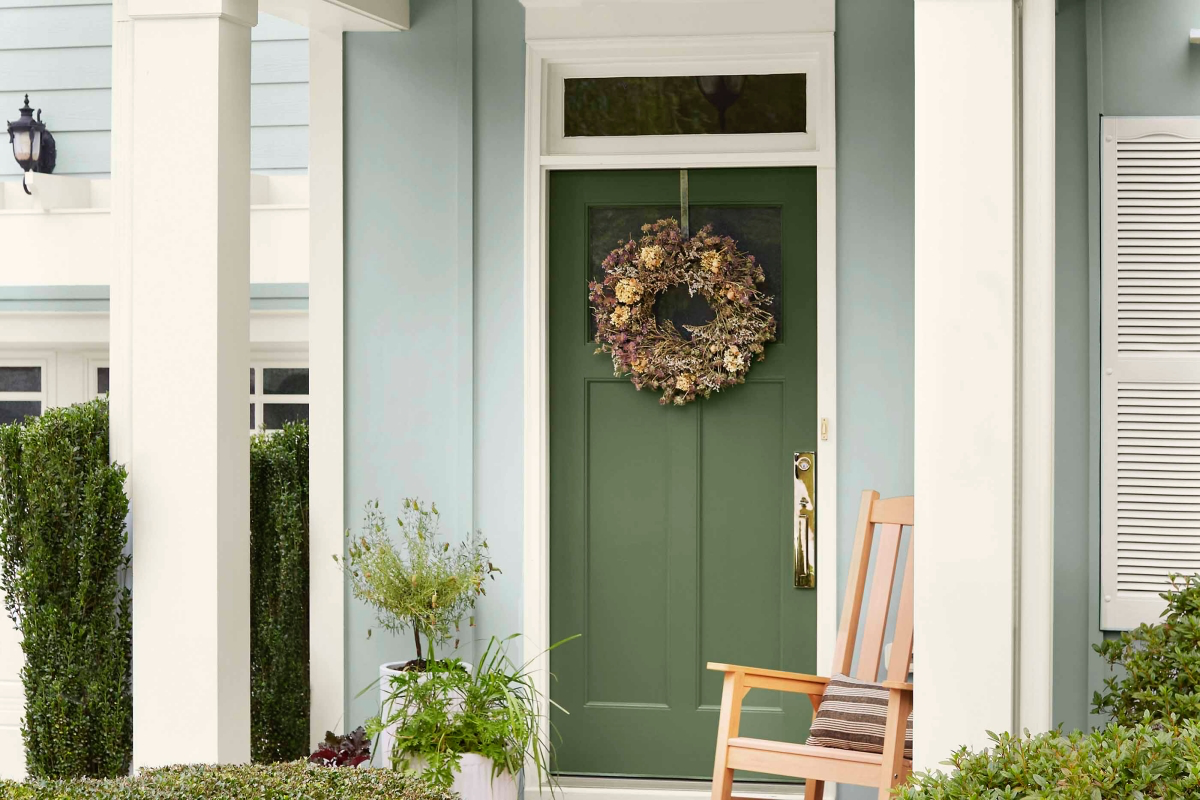
- Ensures your chosen green color looks true and vibrant, not muddy.
- Blocks stubborn stains from bleeding through from the old finish.
- Provides a superior grip for the topcoat, preventing future peeling.
The secret? Never skip the primer. Using a high-adhesion exterior primer like Zinsser’s Bulls Eye 1-2-3 is the single best way to guarantee a professional, long-lasting result.
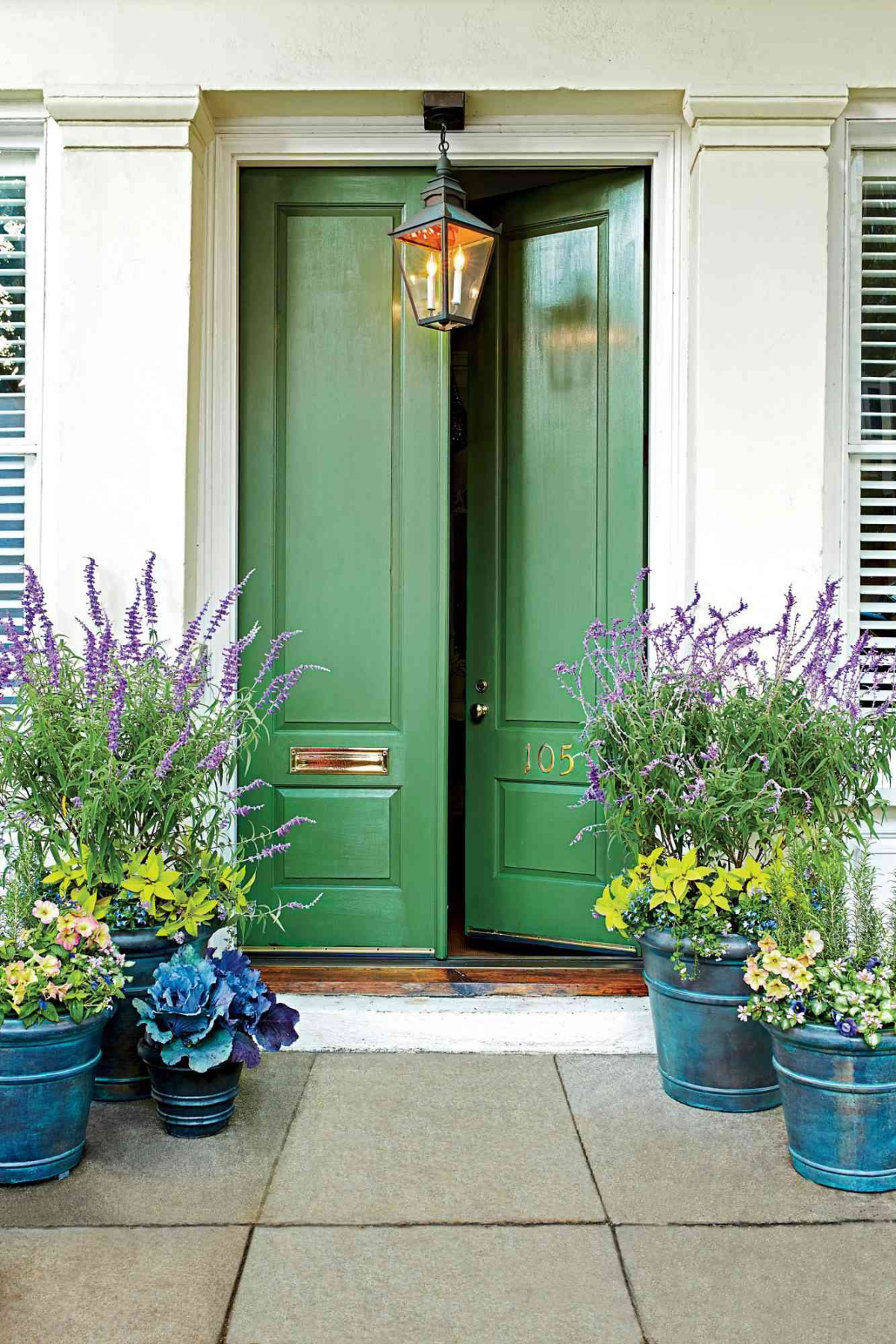
A deep hunter green offers a timeless, elegant contrast against classic red brick. For homes with cool-toned stone or gray siding, a softer sage or mint green creates a harmonious, calming effect. And if you have a white or cream-colored house, you’re in luck—almost any shade, from a zesty lime to a moody olive, will make a stunning statement.
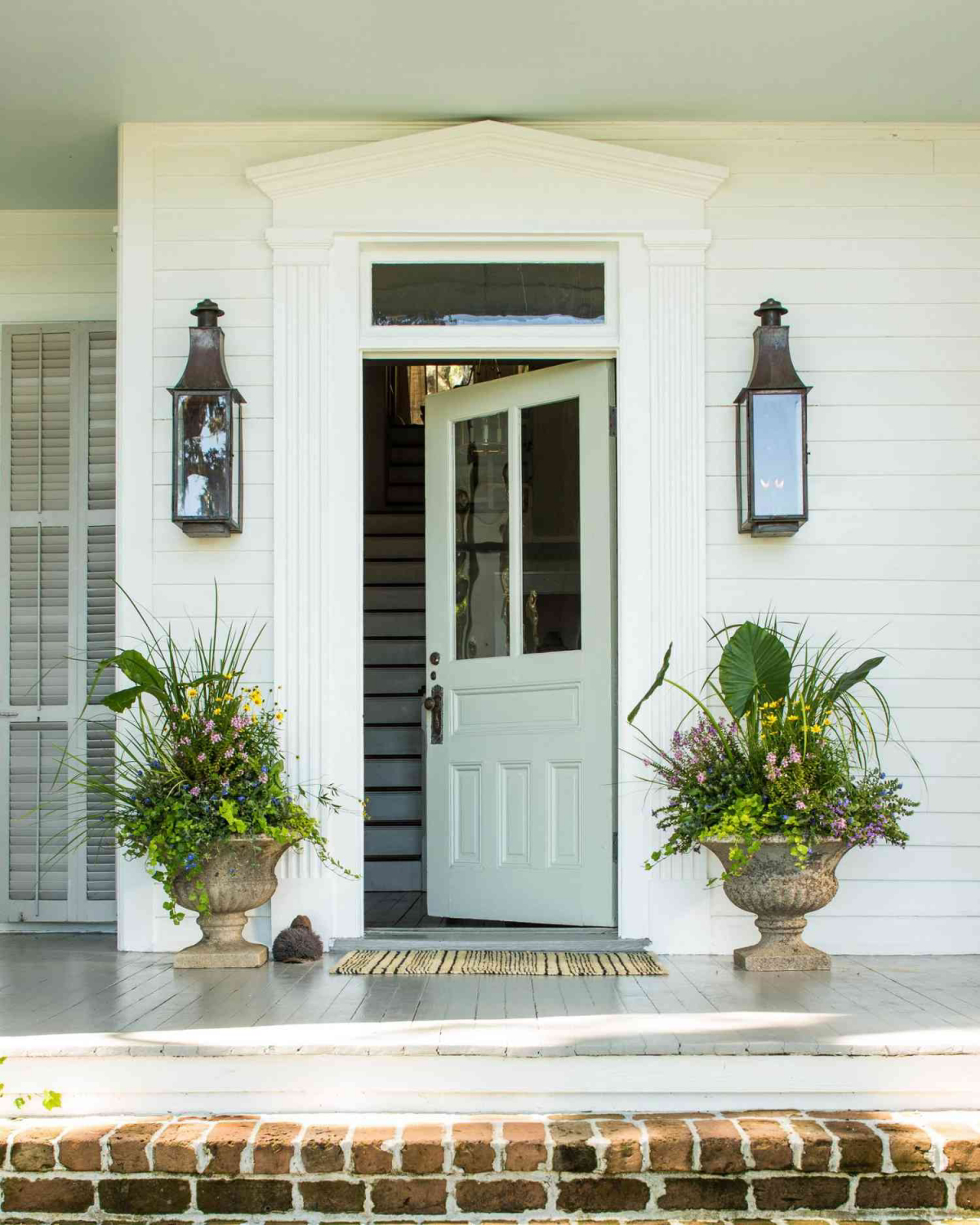
Modern water-based exterior paints can have VOC (Volatile Organic Compound) levels under 50 g/L, compared to over 250 g/L for some traditional oil-based paints.
This isn’t just about being eco-friendly. Low-VOC paints, like Behr’s Marquee Exterior Enamel, have significantly fewer harsh fumes, making the painting process more pleasant and safer. Plus, they clean up with just soap and water, eliminating the need for harsh chemical solvents like mineral spirits.
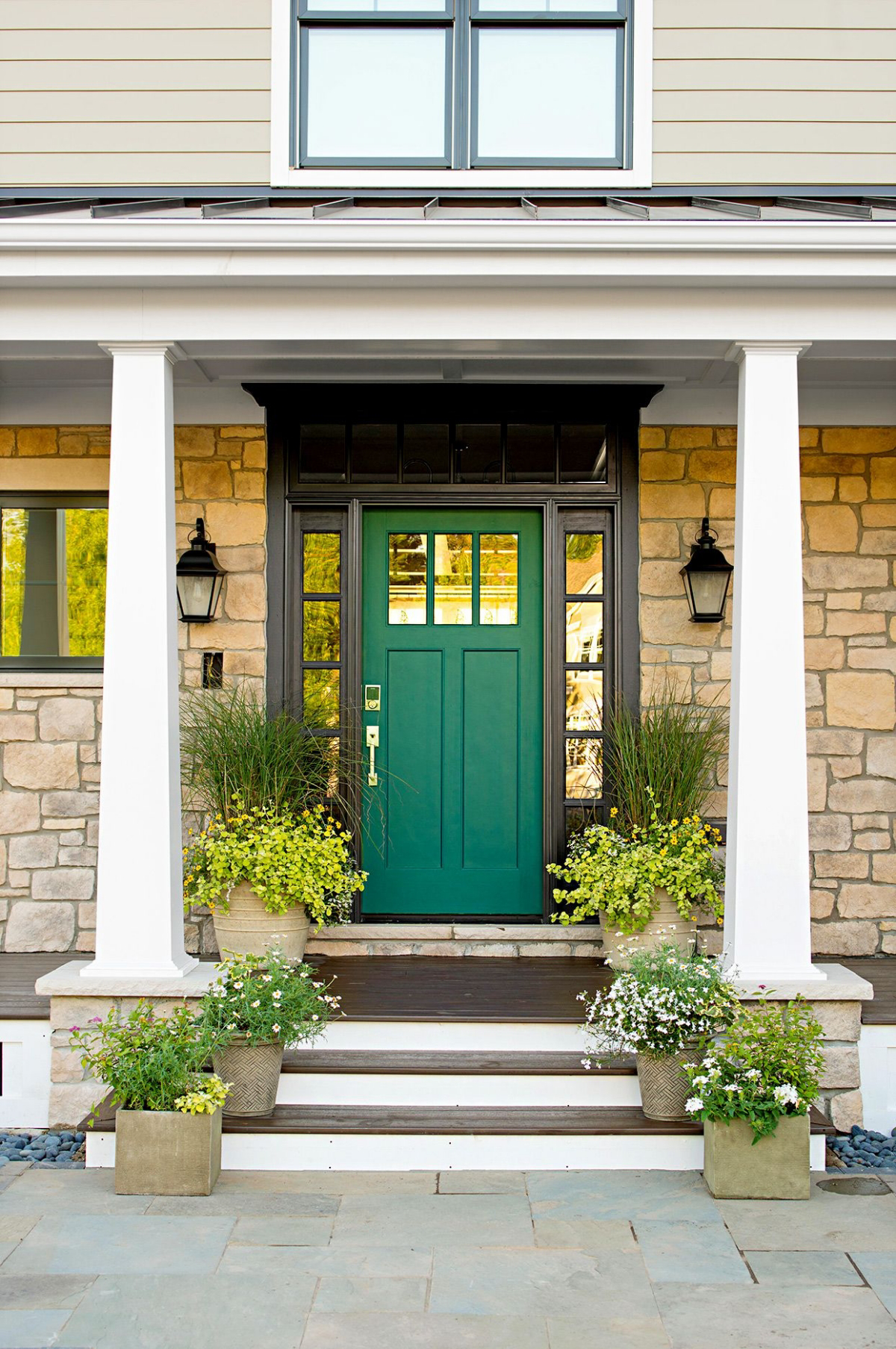
Fallen in love with a high-end designer color but not the price tag? Most major paint retailers, like Home Depot or Lowe’s, have sophisticated color-matching technology. Bring in a paint chip of your dream color and ask them to match it in a quality, affordable exterior paint line. You’ll get the designer look for a fraction of the cost.
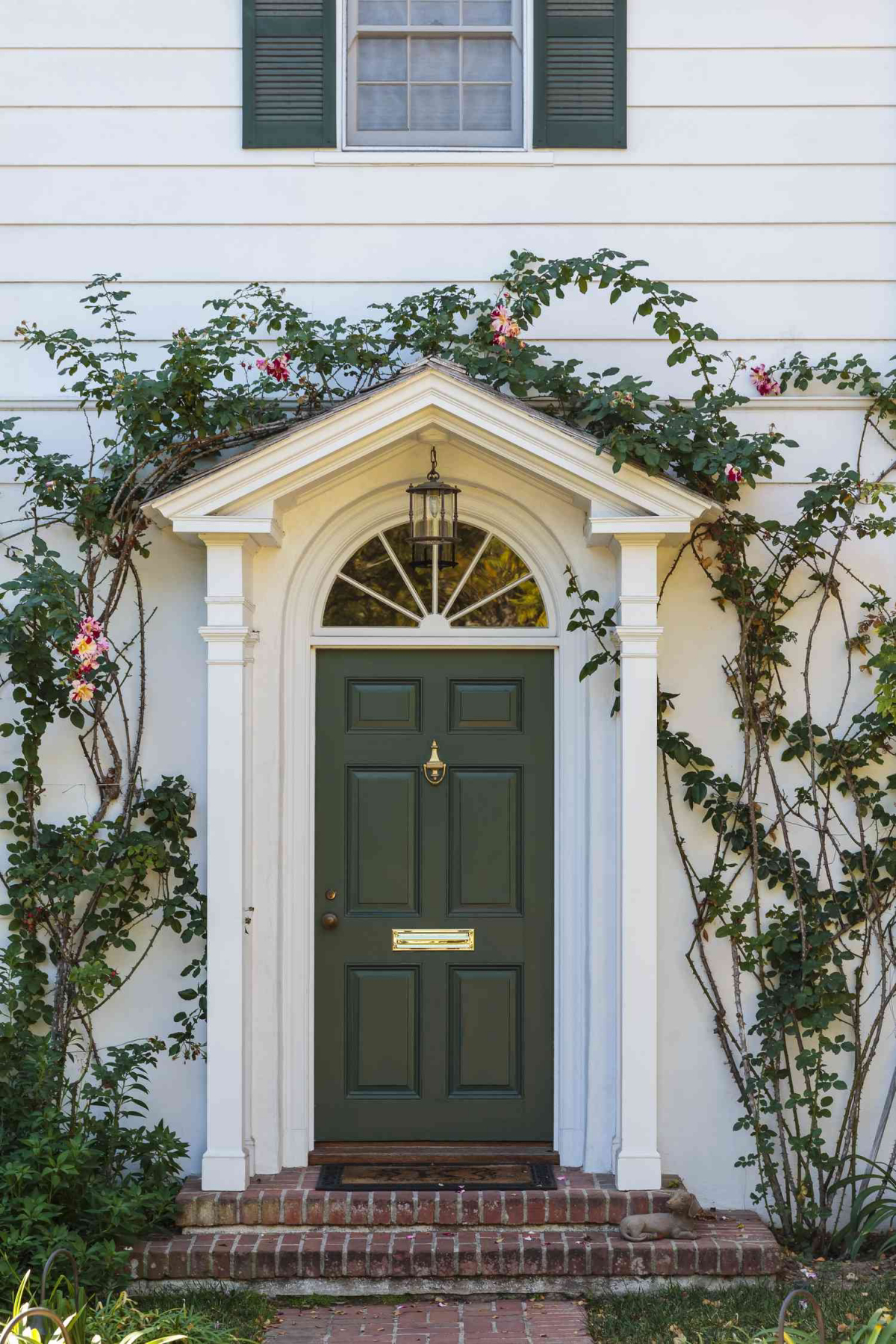
To elevate your door’s new look, give your front porch light fixture or house numbers a quick makeover. A can of spray paint that matches your new hardware finish—like Rust-Oleum’s Universal Metallic in Matte Black or Aged Brass—can tie the whole entrance together in an afternoon.
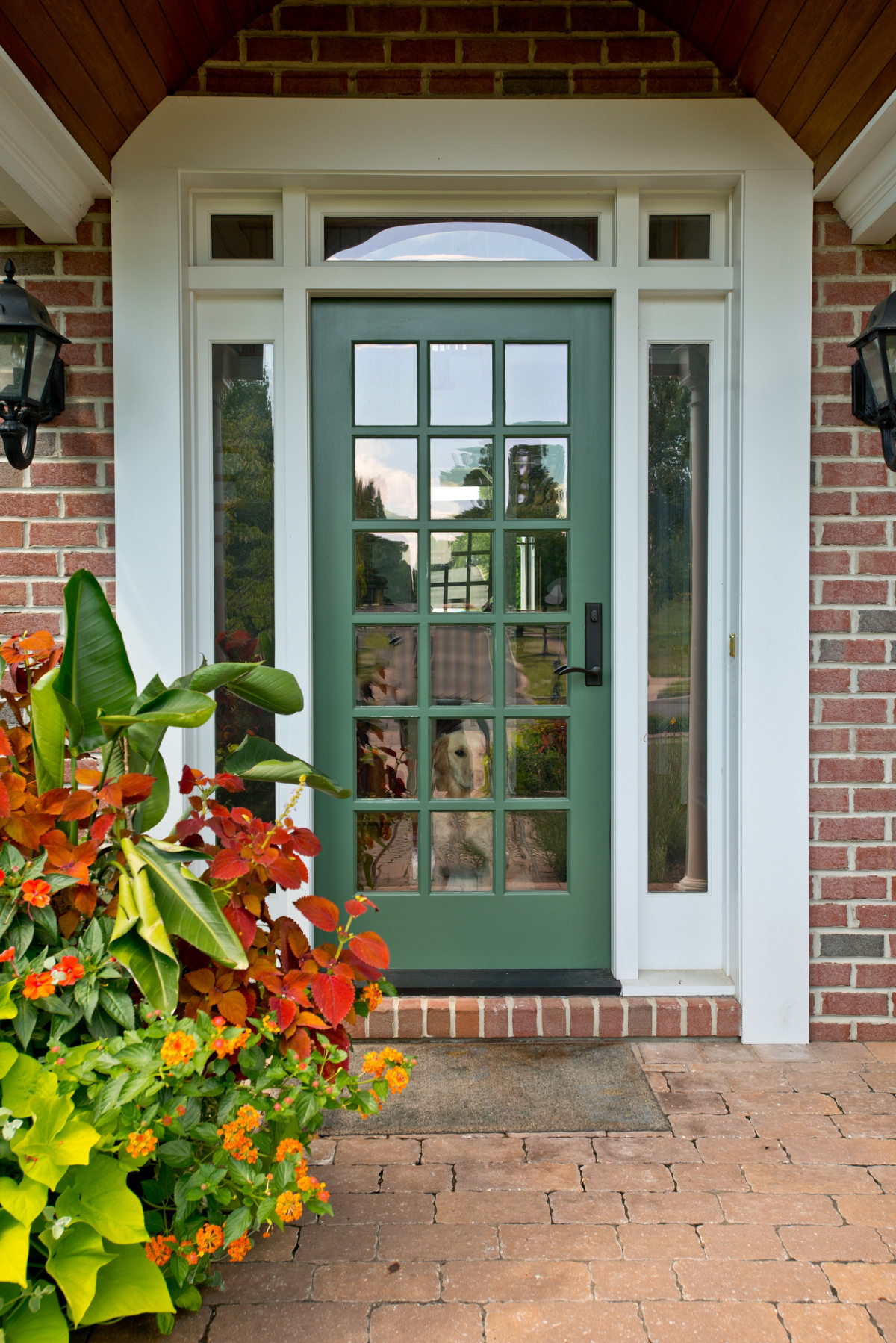
- A high-quality 2.5-inch angled sash brush for cutting in around panels and glass.
- A small, 4-inch high-density foam roller for an ultra-smooth finish on flat areas.
- Liquid deglosser to remove the old sheen without the dust of sanding.
- High-quality painter’s tape (like FrogTape) for crisp lines around hardware and glass.
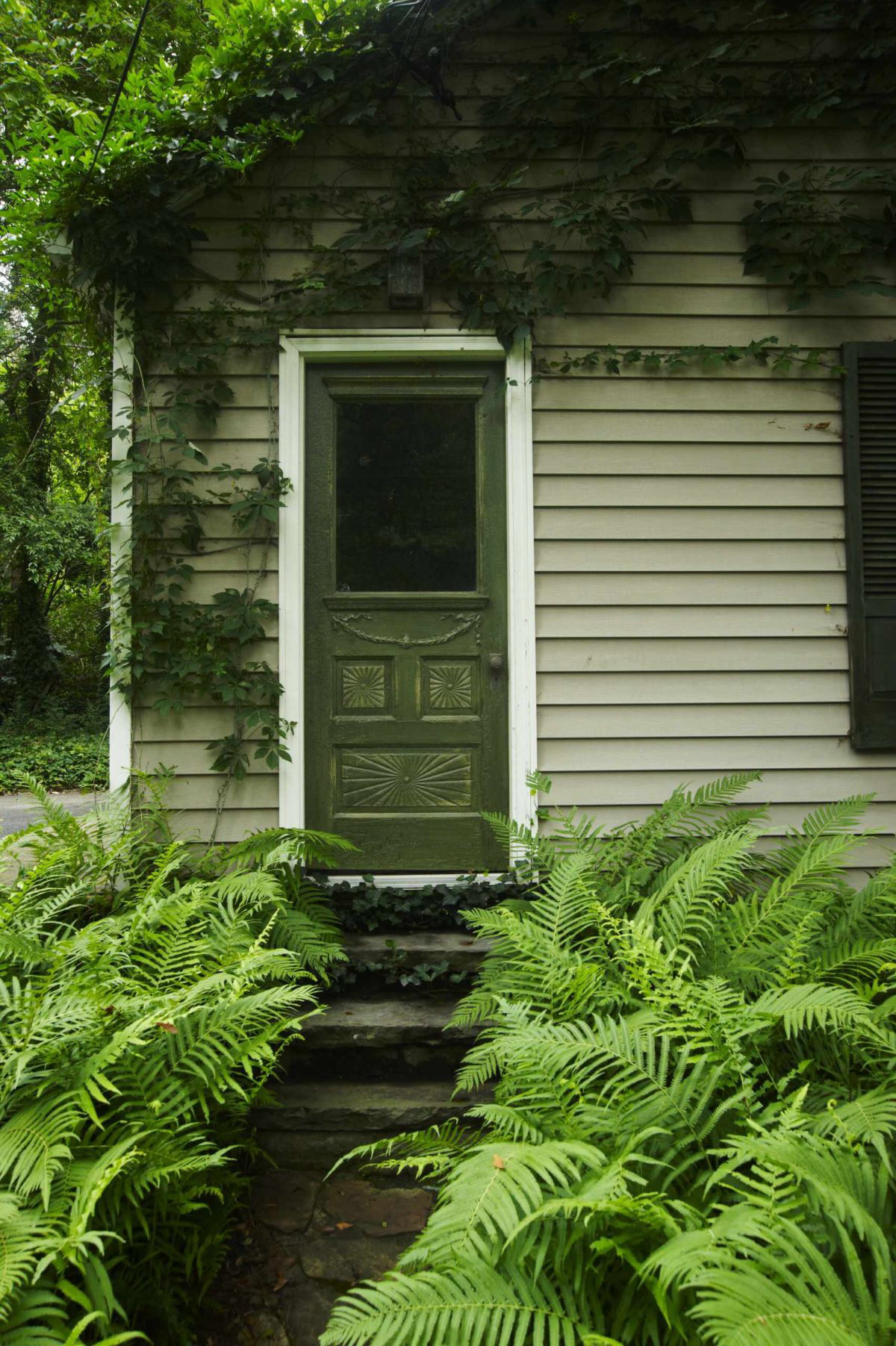
The shade of green you choose sets a distinct mood before anyone even rings the bell. A dark, moody olive feels grounded, historic, and secure. In contrast, a bright, zesty chartreuse is energetic, playful, and modern, promising a creative spirit within.
The current movement towards biophilic design—connecting our living spaces with the natural world—has pushed earthy greens to the forefront. Forget kelly green; think of the complex shades found in the wild. Colors like lichen, moss, and grayish-eucalyptus tones are trending. These muted greens don’t shout for attention. Instead, they create a seamless transition between your home and the landscape, fostering a sense of calm and belonging.










